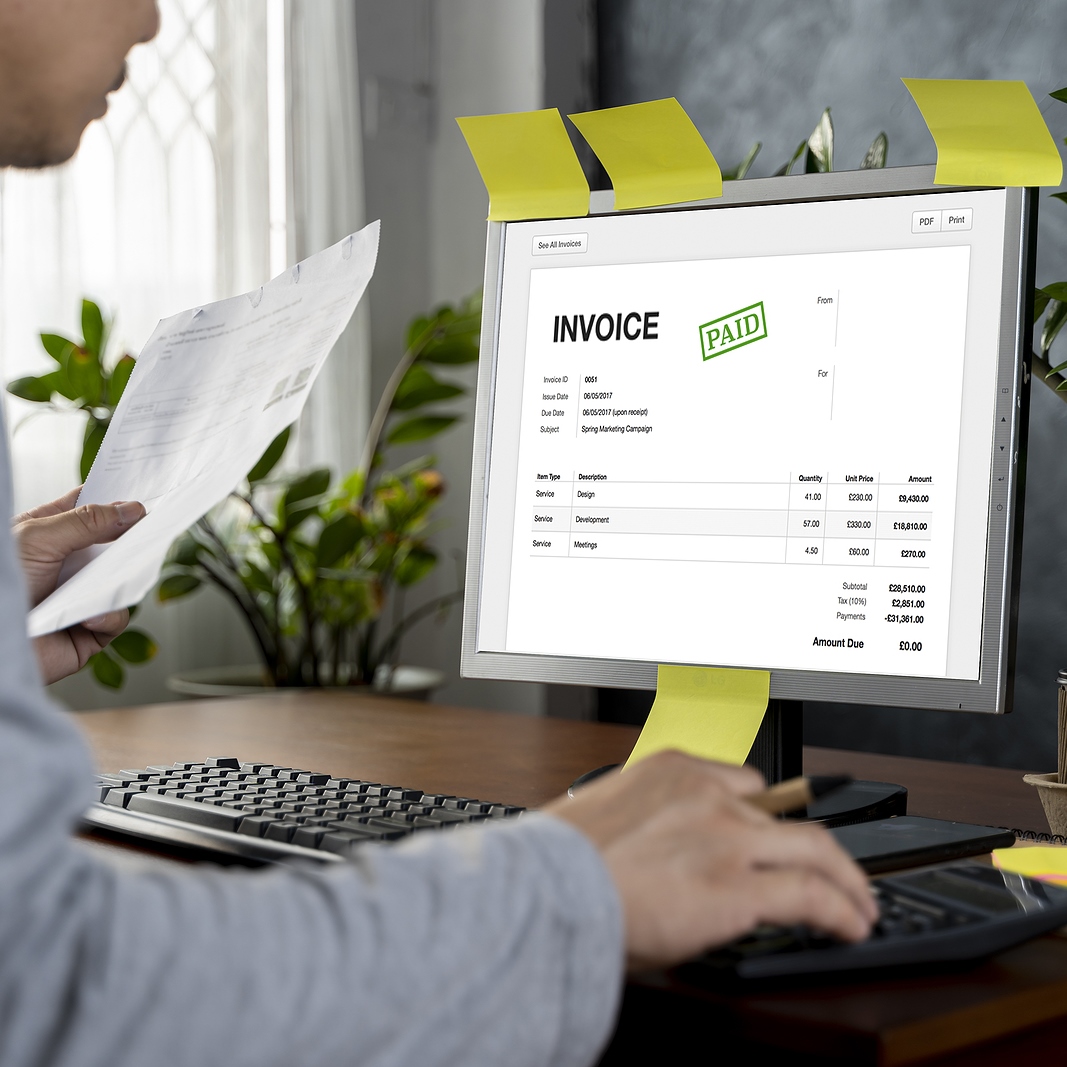As the owners of many small- and medium-sized art businesses undoubtedly are aware, invoicing is time-consuming, tedious, and comes with plenty of opportunities for human error. However, creating invoices for your business doesn’t need to be like this.
Follow these invoicing trends in 2023 and change the way your art business provides clients with the information they need to pay what they owe.
Top Invoicing Trends in 2023
Consider following one or more of these top invoicing trends this year.
Switch to e-invoicing
E-invoicing is one of the biggest invoicing trends in 2023, and it refers to using online invoicing systems to streamline traditional procedures for billing and receiving payments. With e-invoicing, you can send your clients the same information, and you will receive the same verifications faster and with unlimited access.
Cloud invoicing
Cloud invoicing is another trend you can follow in 2023. One of the biggest benefits of cloud invoicing is that you can do it from almost anywhere in the world. You can access cloud invoicing through a mobile app, so you don’t need to be in a brick-and-mortar office to create and send invoices to your clients. Plus, you can do this in a fraction of the time it would take you to create and send a traditional invoice.
You can store all the information about your most frequently used services in a cloud storage system with a user-friendly tagging system and cloud invoicing software.
Automated invoicing
Automated invoicing is another trend to consider following, as it can significantly speed up and improve the effectiveness of your invoicing administration. Manually entering billing information into your art business’ accounting software, sending payment reminders, and reconciling payments received with the invoices you sent out can take hours. Automated invoicing software can change this.
The software can take care of the whole process, right from creating invoices to receiving and reconciling payments. As the entire process is automated, there’s next to no chance of human error, which means there’s a good chance your invoices will be free of mistakes.
AI and machine learning
More and more small- and medium-sized businesses have started using artificial intelligence (AI) for automating and streamlining various processes and administrative tasks.
Invoicing is one of the processes that AI has transformed for those businesses. AI, automation, and machine learning handle the entire invoice ‘lifecycle,’ right up to payment and reconciliation, without any human intervention or interaction.
AI can process hundreds of invoices and analyze financial data within a few minutes. By making it easier for you to find and verify previous transactions, invoice clients, and receive and reconcile payments, AI offers your art business greater control over your costs and supply chain.
The elements of a professional invoice
Regardless of which invoicing trends you choose to follow, you need to ensure that the invoices it generates contain all the elements of a professional document. These include:
- A noticeable header
Your clients must know from the moment they see the document header that they’re reading an invoice. The software you use should identify the document as an invoice in the heading, which means the font size must be large and the text bold.
- Company information
All the invoices you send to your clients must include your art business’ legal name, street address, telephone number, and email address. It’s also a good idea to include your logo to make your invoice instantly identifiable as belonging to you. This information can appear at the top or bottom of the invoice.
Neglecting to include this information can make your business look unprofessional and may result in payment delays.
- Client information
Every invoice needs to include all relevant customer details, such as their name, address, telephone number, and email address. This information can appear near the top of the invoice, below your company information.
- Sent and due dates
Include the date on which you issued the invoice, as well as the date on which payment is due. This information can come in handy if there ever are any queries regarding the date of service, or the sale of an item, or the issuing of the invoice. If there are any penalties for late payment, mention them on the invoice.
- An invoice number
Include additional identifiers, such as transaction-specific invoice numbers, on your invoices. It’s always best if the invoice number is specific to each invoice.
- Product/service description
All the products or services included in the grand total should get described separately on your invoice. Any reductions or discounts must get listed too. This will leave no doubt in your client’s minds that they’re paying for what they received.
- The grand total
Last but not least, your art business’ invoices must include the grand total so that your clients know exactly how much they owe, whether it’s for an artwork, shipping, storage, or any other service.
The top invoicing trends for 2023 can revolutionize the way your art business bills clients. From issuing invoices to invoice processing and reconciliation, streamlining your accounting and financial processes has never been simpler. The results of doing so will lead to happier clients and faster payments, so it’s a win-win situation on all sides.
